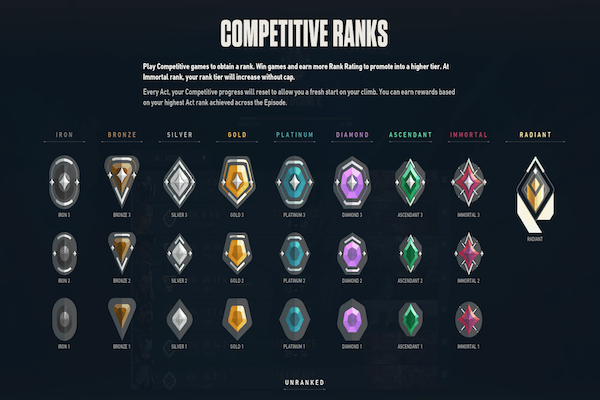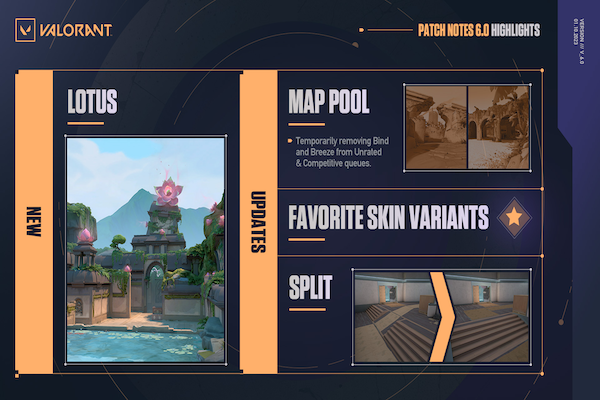Understanding the Valorant Ranking System: A Detailed Guide
Valorant, the fast-paced first-person shooter developed by Riot Games, has quickly become a staple in the competitive gaming community. Its heart-pounding action and strategic gameplay have drawn millions of players worldwide. Integral to its appeal is the competitive ranking system, a structure that fuels the competitive spirit and provides a framework for players to measure their skills and progress.
Understanding this ranking system is crucial for any Valorant player. It's not just about climbing the ranks; it's about understanding where you stand in the broader landscape of the game. Each rank is a milestone, marking the player's growth, strategy refinement, and mastery of game mechanics. For the enthusiastic Valorant player, delving into the nuances of this system is key to not just playing the game but mastering it.
Understanding the Ranks and Tiers
Valorant's competitive scene is structured around nine primary ranks:
- Iron
- Bronze
- Silver
- Gold
- Platinum
- Diamond
- Ascendant
- Immortal
- Radiant
Each of these ranks, barring Radiant, is further divided into three tiers - the lowest being Tier 1 and the highest being Tier 3. This tier system adds depth to the ranking, allowing players to find their precise standing within a broader rank. Progressing through these tiers and ranks is a matter of accumulating Rank Rating (RR) points, requiring 100 RR to advance to the next tier. It's a journey of consistent performance and gradual improvement, where each match contributes to your overarching goal of ascending the ranks.

Eligibility and Requirements for Competitive Play
- Reaching Level 20: To dive into Valorant's competitive mode, players must first reach account Level 20. This prerequisite ensures that players have sufficient experience with the game's mechanics before entering the more intense competitive arena.
- Queuing Restrictions:
- Party Size: Valorant imposes specific restrictions on party sizes when queuing for ranked games. While solo, duo, and trio queuing are straightforward, four-member parties are prohibited. This is to ensure a fair and balanced experience for all players.
- Rank Disparity: Riot Games allows only a slight rank disparity (up to one rank) between teammates queuing. However, this rule is relaxed for five-stack parties, although a significant rank difference in such teams may result in adjusted RR gains and losses.
By adhering to these requirements, Valorant aims to maintain a balanced and competitive environment where players can test and improve their skills against similarly experienced opponents.
Episodes and Acts: Their Impact on Rankings
In Valorant, the competitive timeline is segmented into 'Episodes' and 'Acts,' which are pivotal in shaping the ranking experience. An Episode is a longer competitive frame, typically lasting about six months and encompassing three Acts, each around two months long. This structure adds a dynamic aspect to the game and influences player rankings significantly.
Episodes come with a complete rank reset, injecting a fresh start into the competitive landscape. At the beginning of an Episode, players must engage in five competitive matches to reveal their ranks, with the highest possible initial placement being Ascendant. This reset is hard, often placing players up to two ranks lower than their previous Act achievements. On the flip side, Acts bring about a softer reset. Here, players only need to complete one competitive match to reveal their rank, allowing them to pick up relatively close to where they left off in the previous Act. The first Act of an Episode features a hard rank reset, while the subsequent Acts involve softer resets.
Rank Rating (RR) and Matchmaking Rating (MMR)
- Rank Rating (RR): RR is a visible score players earn through competitive play. It primarily fluctuates based on match outcomes and individual performance. Accumulating 100 RR points is essential for climbing to the next tier within a rank.
- Matchmaking Rating (MMR): MMR is a hidden rating that determines whom players are matched against in competitive games. It reflects a player's skill level more accurately and is used by the system to ensure fair and balanced matches.
Recent updates have brought significant changes to the RR gain system:
- Episode 6 Update: Starting with Episode 6, RR gains and losses are more influenced by win/loss outcomes rather than the round differential. This shift was introduced to reduce large discrepancies in RR changes based on round performance.
- Performance vs. Rank Disparity: If a player’s in-game rank significantly differs from their MMR, their RR gains will depend more on match performance. This adjustment aims to align ranks with actual skill levels more effectively.

Valorant Patch 6.0: Key Competitive Updates
Valorant's Patch 6.0 introduced notable updates to the competitive ranking system:
- RR Gains/Losses Adjustment: One of the major changes was the modification of how RR points are awarded or deducted. The patch shifted the focus towards win/loss outcomes, lessening the impact of round differentials. This change was made to ensure a more consistent ranking experience across matches.
- Balancing Rank and MMR: The patch addressed issues where players experienced harsh RR losses upon defeat or marginal gains upon victory, especially when their in-game rank and MMR were misaligned. Now, players with ranks lower than their actual MMR are rewarded more for good performance, and those with higher than their MMR don’t face severe penalties for losses.
These updates aim to make the ranking system more balanced and fair, ensuring that player ranks accurately reflect their skills and performance in the game.
Challenges and Future Improvements
While robust, Valorant's competitive ranking system faces ongoing challenges that impact the integrity of gameplay. Issues such as smurfing (experienced players creating new accounts to play against less skilled opponents) and account buying disrupt the competitive balance. These practices not only skew the ranking system but also diminish the experience for players genuinely striving to improve their skills.
In response, Riot Games is actively working to enhance the ranking system. Their efforts are focused on creating a more balanced and fair competitive environment. By implementing stricter controls and continuously updating the system to address these challenges, Riot aims to preserve Valorant's competitive spirit and ensure that the ranking system truly reflects a player's skill and dedication.

Conclusion
Understanding Valorant's ranking system is more than a mere grasp of its mechanics; it's about appreciating the journey of competitive play. Each rank and tier represents a step in a player's journey towards mastery. This system categorizes skill levels and continually motivates players to improve and challenge themselves. Engaging with this system is essential for any player looking to experience what Valorant offers fully. It's not just a game—a competitive arena where skills are honed, strategies are tested, and legends are made. Dive into Valorant's ranking world, and you might find yourself among the best ranks.






